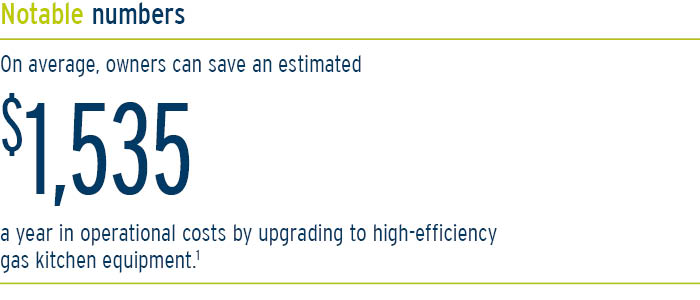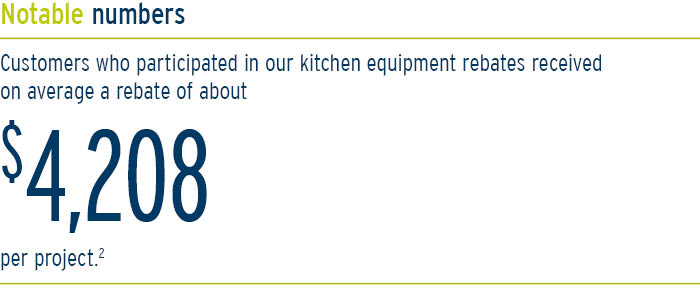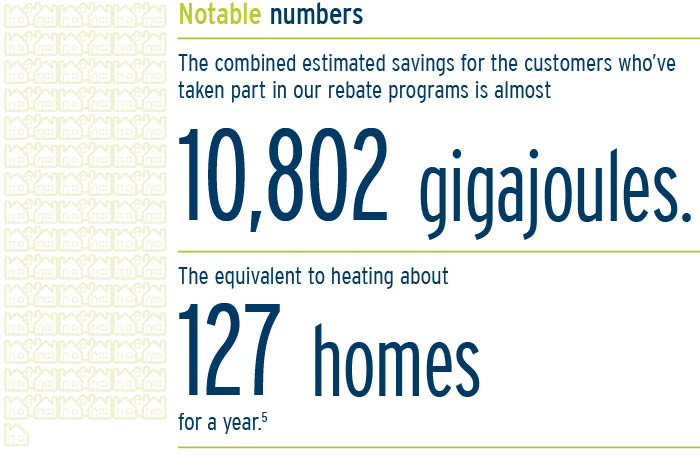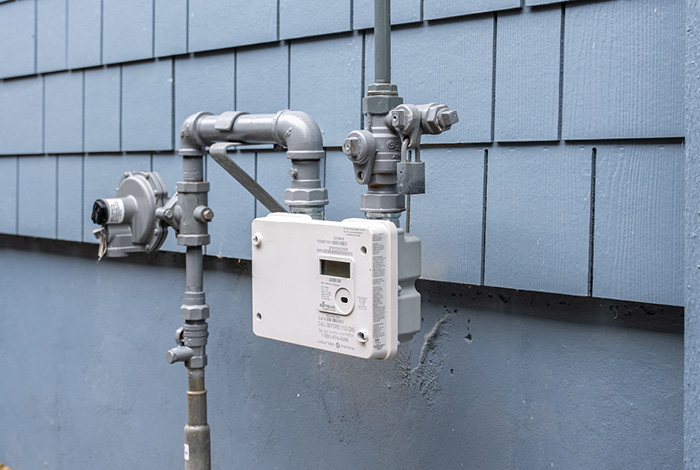Is your commercial kitchen equipment costing more than it has to?
November 24, 2021
When owners in the food service industry are faced with the decision to upgrade their commercial kitchen equipment, the easy answer is to swap out the old model with a like-for-like model. However, that doesn’t take into account the possible cost savings and incentives available when upgrading to high-efficiency gas kitchen equipment.
Here are some ways that running old commercial kitchen equipment could be costing you more than you know and how high-efficiency equipment can help improve your bottom line.
The cost of running old equipment
While it may not be top of mind for owners to think about, simply running older equipment may be a drain on your operating budget.
Older equipment is often less efficient than what is available today and can also become less efficient over time which means you’re paying for energy that is not actually being converted into the heat you need to prepare meals and clean your dishes. It can be money down the drain.

In contrast, the restaurants that took advantage of our rebates to offset the cost of upgrading to high-efficiency gas appliances are already seeing payback in energy savings. Between January and December 2023, we've seen more than 75 customers take part in these programs and each restaurant is saving an average $1,535 a year in operational costs.1 These year-over-year savings add up fast which means an upgrade can not only bring some shine to your kitchen but also leave some money in the bank.
If you don’t know where to start when it comes to choosing high-efficiency appliances, looking for models that are ENERGY STAR® certified is a great starting point. Equipment with this designation means it meets strict energy efficiency standards that help customers save energy and money.
The cost of choosing low efficiency equipment
You may already know your equipment is in need of replacing and are tempted to shave a few dollars off the front-end cost investment by choosing standard efficiency equipment. At first, the standard efficiency unit may appear cost-effective, but choosing this route doesn’t account for the year-over-year cost that will come with running it as compared to high-efficiency equipment.
This means every year, restaurant owners can put money back into their business to help cover additional operational costs or invest in other energy efficiency upgrades to help them save even more energy and money.
One customer realized the benefits of choosing high-efficiency gas cooking equipment in his restaurant Chic-Chic-Chicken. Kanwaljeet (Lucky) Randhawa installed two large vat fryers and two combination ovens in his newly built restaurant and quickly saw annual gas and cost savings. He even noticed that the quality of the food was much better as you could control the temperature and the food cooked faster with high-efficiency units. At the end, he even received $14,000 back in FortisBC rebates!
The cost of missing out on rebates
While the upfront costs for high-efficiency equipment may be more than standard efficiency units, there are rebates available to help restaurant owners cover a portion of these costs.
Lucky, for example, estimated he’d save about 540 gigajoules of gas annually—about $6,000 at current rates—compared to operating his old equipment.
On average, customers who have participated in our commercial kitchen equipment rebates received a rebate of about $4,208 per project 2 and with our current rebate offers, the payback period for most of the high-efficiency units is less than a year. 3 So businesses can affordably upgrade to high-efficiency gas kitchen equipment which can pay itself off in about a year–that’s a pretty sweet deal.

To qualify for rebates, gas combination ovens, convection ovens, fryers and rack oven, must hold an ENERGY STAR certification and for conveyor ovens and griddles the model must be on the approved list.4
Reducing energy and emissions through energy efficiency
Beyond cost savings, you can feel good about the positive impact you are having on reducing energy use and greenhouse gas (GHG) emissions. In total, the combined estimated savings for the customers who’ve taken part in our rebate programs for high-efficiency commercial kitchen equipment is almost 10,802 GJ, the energy equivalent to heating about 127 homes for a year. 5 In addition, the estimated GHG emissions reduced is 539 tonnes of carbon dioxide, the equivalent to removing 223 cars from the road for a year. 6

Reducing our customers’ energy use and GHG emissions through energy efficiency improvements is one of the ways we’re working towards a cleaner energy future for British Columbia and commercial customers can further reduce their GHG emissions by signing up for Renewable Natural Gas 7 It's an affordable low-carbon energy option that is made from organic waste and works the same way as conventional natural gas in existing equipment.
We’re here to help
Besides kitchen equipment, we've got a range of rebates on energy-efficiency upgrades for your business, including refrigeration, ventilation, and heat pump water heaters for FortisBC electricity customers.
Many rebates are available instantly at the point of sale. If you do need a hand with an application, our team of energy solutions managers are here to help.
Not sure what's right for your business? Consider our free commercial energy assessment. You'll learn about rebates available to you and get some helpful no- and low-cost energy-saving tips to start saving energy right away.
1 Calculation based on the expected annual savings from FortisBC customers who have installed high-efficiency gas commercial kitchen equipment to replace their standard efficiency equipment and participated in FortisBC’s rebate programs from January 2021-August 2021.
2 Based on customers who have participated in FortisBC’s gas commercial kitchen equipment rebates from January 2023-December 2023 and replaced their standard efficiency equipment with high-efficiency units.
3 Payback period calculated based on FortisBC’s 2024 rebate offers for natural gas commercial kitchen equipment and based on incremental costs.
4 Payback period calculated based on FortisBC’s 2024 rebate offers for natural gas commercial kitchen equipment and based on incremental costs. Additional terms and conditions apply for all FortisBC rebate programs.
5 Based on the average energy use of a residential home of 85 GJ/year.
6 Based on a vehicle emissions factor of 3.26.
7 Renewable Natural Gas (also called RNG or biomethane) is produced in a different manner than conventional natural gas. It is derived from biogas, which is produced from decomposing organic waste from landfills, agricultural waste and wastewater from treatment facilities. The biogas is captured and cleaned to create Renewable Natural Gas.



